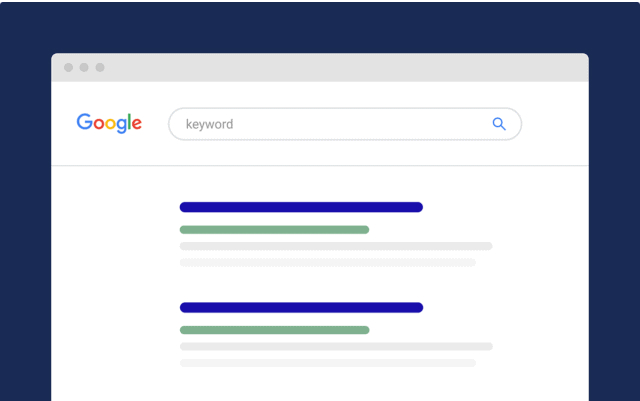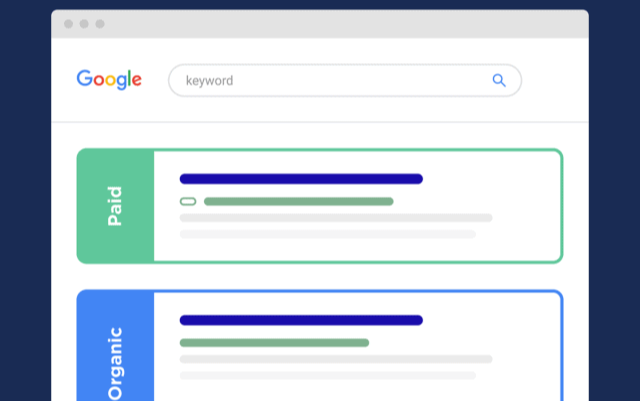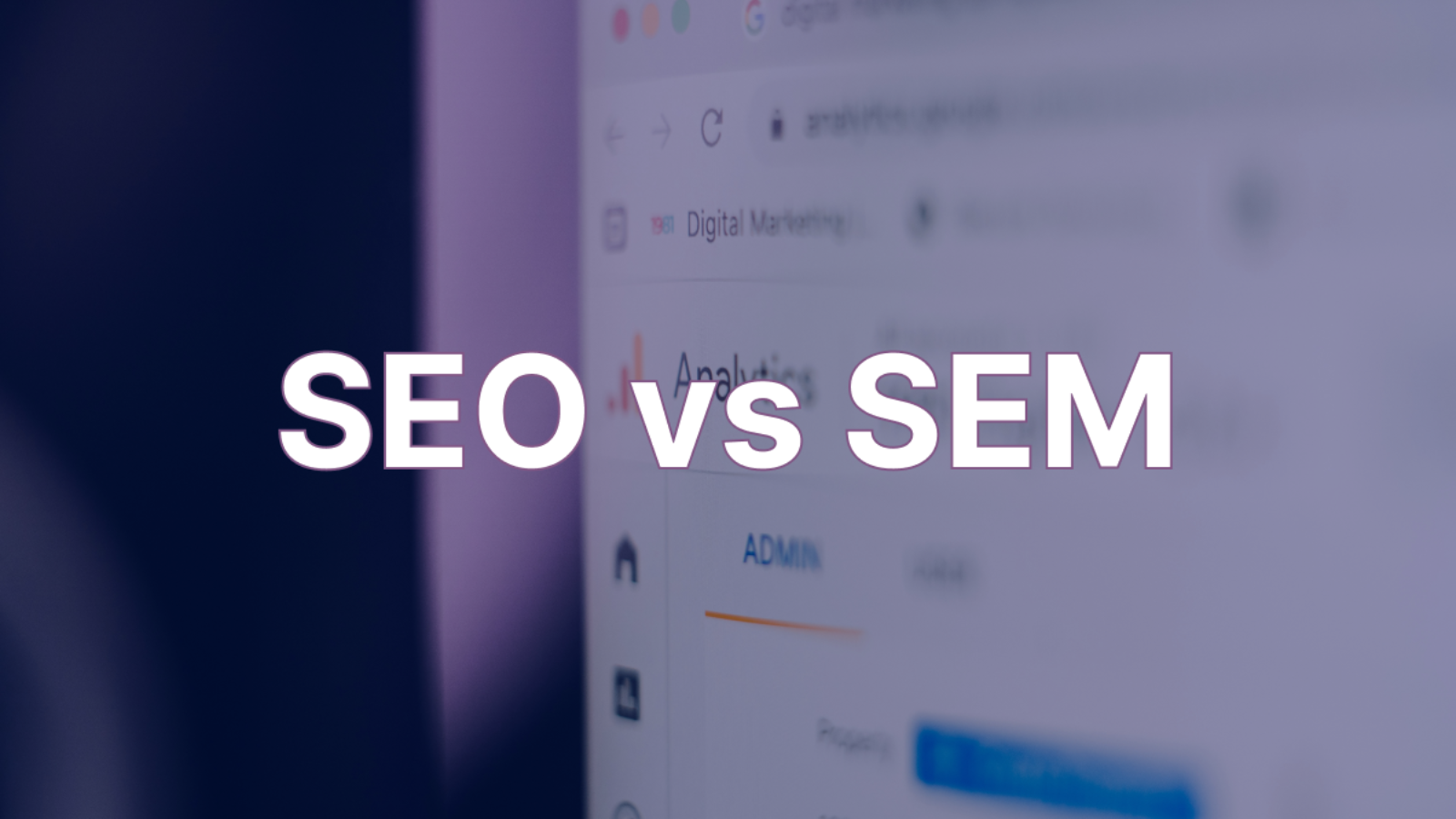What Is The Difference Between SEO and SEM?
In digital marketing, SEO and SEM are crucial for online success. This guide delves into their differences, benefits, and applications, offering insights for both seasoned marketers and newcomers. Explore the mysteries of SEO and SEM to enhance your online presence.
Table of Contents
What Is SEO?
SEO, short for Search Engine Optimization, is a multifaceted digital marketing strategy aimed at improving a website’s visibility and ranking on search engine results pages (SERPs). The primary goal of SEO is to increase organic (non-paid) traffic to a website by enhancing its relevance, authority, and trustworthiness in the eyes of search engines like Google, Bing, and Yahoo.
SEO encompasses a wide range of techniques and best practices, including:
- Keyword Research: Identifying and targeting specific keywords and phrases that potential visitors might use when searching for relevant content or products/services.
- On-Page Optimization: Optimizing various on-page elements such as meta titles, meta descriptions, headings, content, and internal linking structure to make them more search engine-friendly and relevant to the targeted keywords.
- Off-Page Optimization: Building a strong backlink profile by acquiring high-quality inbound links from reputable websites, which indicates to search engines that the site is credible and authoritative.
- Technical SEO: Ensuring that the website is technically sound and easily accessible to search engine crawlers, including factors like site speed, mobile-friendliness, site architecture, and schema markup.
- Content Marketing: Creating high-quality, informative, and engaging content that addresses the needs and interests of the target audience, thereby attracting organic traffic and earning natural backlinks.
- Local SEO: Optimizing a website to appear prominently in local search results, is especially important for businesses targeting a specific geographic area.
What Is SEM?

SEM, or Search Engine Marketing, is a digital marketing strategy that involves promoting a website by increasing its visibility in search engine results pages (SERPs) through paid advertising. Unlike SEO, which focuses on improving organic (non-paid) search rankings, SEM primarily revolves around paid advertising methods to drive targeted traffic to a website.
The cornerstone of SEM is pay-per-click (PPC) advertising, where advertisers bid on keywords relevant to their target audience. When users search for those keywords on search engines like Google or Bing, the advertiser’s ad may appear at the top or bottom of the search results page. Advertisers only pay when a user clicks on their ad, hence the term “pay-per-click.”
Key components of SEM include:
- Keyword Research: Identifying relevant keywords and phrases that potential customers are likely to use when searching for products, services, or information related to the advertiser’s offerings.
- Ad Creation: Crafting compelling and relevant ads that attract the attention of search engine users and entice them to click through to the advertiser’s website.
- Bid Management: Setting bids for selected keywords based on their competitiveness, relevance, and anticipated return on investment (ROI). Advertisers can adjust their bids to ensure their ads appear prominently in search results.
- Ad Extensions: Enhancing ads with additional information such as site links, callouts, location information, and structured snippets to provide more value to users and improve ad performance.
- Landing Page Optimization: Designing and optimizing landing pages to provide a seamless and relevant experience for users who click on the ads, increasing the likelihood of conversion.
What is the difference between the SEM and SEM?
SEO (Search Engine Optimization) and SEM (Search Engine Marketing) are both digital marketing strategies aimed at improving a website’s visibility in search engine results pages (SERPs), but they achieve this through different means:

- Organic vs. Paid: The primary difference between SEO and SEM lies in their approach to driving traffic. SEO focuses on optimizing a website to improve its organic (non-paid) search rankings, aiming to attract traffic naturally through unpaid search engine results. On the other hand, SEM involves paid advertising strategies, such as pay-per-click (PPC) campaigns, to increase a website’s visibility in search results.
- Immediate vs. Long-Term Results: SEM can provide immediate results, as ads can be launched and start appearing in search results almost instantly after setup. In contrast, SEO is a longer-term strategy that requires time and consistent effort to see significant improvements in organic search rankings. While SEO may take longer to yield results initially, its effects can be more enduring and sustainable over time.
- Cost: SEM involves a cost-per-click (CPC) model, where advertisers pay each time a user clicks on their ad. The cost of SEM campaigns can vary depending on factors like keyword competitiveness, bid strategy, and budget allocation. SEO, on the other hand, typically involves upfront costs for optimization efforts, but once achieved, organic traffic generated through SEO does not incur ongoing costs per click.
- Visibility: SEM ads are typically displayed at the top or bottom of search engine results pages, marked as “Ad” to distinguish them from organic results. While SEM ads offer immediate visibility, they may be perceived as less trustworthy or relevant by some users compared to organic results. SEO focuses on improving a website’s organic search rankings, aiming to appear higher in the unpaid search results, which can enhance credibility and trustworthiness in the eyes of users.
- Targeting Options: SEM offers advanced targeting options, allowing advertisers to specify demographics, geographic locations, device types, and even the time of day when their ads should be displayed. This level of targeting precision enables advertisers to reach highly specific audience segments with tailored messages. SEO, while it can target specific keywords and optimize content for relevance, does not offer the same level of granular targeting options as SEM.
Why is the SEO and SEM being important?
SEO (Search Engine Optimization) and SEM (Search Engine Marketing) are both crucial components of a comprehensive digital marketing strategy for several reasons:
- Increased Online Visibility: In today’s digital age, where consumers rely heavily on search engines to find information, products, and services, having a strong presence in search results is essential. SEO and SEM tactics help businesses appear prominently in search engine results pages (SERPs), increasing their visibility to potential customers.
- Targeted Traffic Generation: Both SEO and SEM strategies are designed to attract highly targeted traffic to a website. By optimizing for relevant keywords and targeting specific demographics or geographic locations, businesses can ensure that the traffic they receive is more likely to convert into leads or customers.
- Brand Awareness and Credibility: Appearing at the top of search results not only increases visibility but also enhances brand awareness and credibility. Users tend to trust websites that rank highly in organic search results or appear in relevant paid ads, leading to greater trust and brand loyalty over time.
- Cost-Effectiveness: While SEM involves paid advertising, it can still be a cost-effective marketing strategy when managed properly. With SEM, businesses only pay when users click on their ads, making it a more targeted and measurable form of advertising compared to traditional methods. Additionally, SEO, although it requires upfront investment in optimization efforts, can provide long-term benefits without ongoing costs per click.
- Competitive Advantage: In competitive industries, having a strong SEO and SEM presence can give businesses a significant competitive advantage. By outranking competitors in search results or targeting niche keywords with less competition, businesses can attract more traffic and customers, ultimately driving revenue and growth.
- Adaptability and Scalability: SEO and SEM strategies are highly adaptable and scalable, allowing businesses to adjust their tactics based on changes in market conditions, consumer behavior, or search engine algorithms. Whether it’s targeting new keywords, refining ad copy, or optimizing website content, businesses can continuously improve their digital marketing efforts to stay ahead of the competition.
What is the most effective SEO or SEM?
Determining whether SEO (Search Engine Optimization) or SEM (Search Engine Marketing) is more effective depends on various factors such as your business goals, budget, timeline, industry competitiveness, and target audience. Both SEO and SEM have their strengths and can be highly effective when implemented strategically. Here’s a comparison to help you decide:
- Effectiveness of SEO:
- Long-Term Results: SEO typically requires time and consistent effort to see significant improvements in organic search rankings. However, once achieved, the results can be more enduring and sustainable over time.
- Cost-Effectiveness: Organic traffic generated through SEO does not incur ongoing costs per click, making it a cost-effective strategy in the long run. However, initial investments may be required for optimization efforts.
- Credibility and Trust: Websites that rank highly in organic search results are often perceived as more trustworthy and credible by users, leading to increased brand trust and loyalty.
- Effectiveness of SEM:
- Immediate Results: SEM can provide immediate visibility and results, as ads can be launched and start appearing in search results almost instantly after setup.
- Targeted Advertising: SEM offers advanced targeting options, allowing advertisers to specify demographics, geographic locations, device types, and even the time of day when their ads should be displayed. This precision targeting enables businesses to reach highly specific audience segments with tailored messages.
- Measurable ROI: SEM campaigns are highly measurable, allowing advertisers to track key metrics such as click-through rates (CTR), conversion rates, and return on ad spend (ROAS). This data can be used to optimize campaigns for better performance and ROI.
General FAQs about SEO and SEM
What’s the difference between SEO and SEM?
SEO (Search Engine Optimization) focuses on optimizing a website to improve its organic (non-paid) search rankings, aiming to attract traffic naturally through unpaid search engine results. SEM (Search Engine Marketing), on the other hand, involves paid advertising methods, such as pay-per-click (PPC) campaigns, to increase a website’s visibility in search results.
Can I use both SEO and SEM simultaneously, or do I have to choose one?
It’s highly recommended to use both SEO and SEM simultaneously as part of an integrated digital marketing strategy. SEO provides long-term benefits such as sustainable organic traffic and enhanced credibility, while SEM offers immediate visibility and targeted advertising options. By combining both approaches, businesses can maximize their online presence and reach a broader audience effectively.
How do SEO and SEM complement each other in a digital marketing strategy?
SEO and SEM complement each other by addressing different aspects of search engine visibility and user behavior. While SEO focuses on organic rankings and long-term sustainability, SEM provides immediate visibility and targeted advertising options. Together, they create a synergistic approach to driving traffic, increasing online visibility, and achieving marketing objectives.
Need SEO or SEM expert, contact us now.

